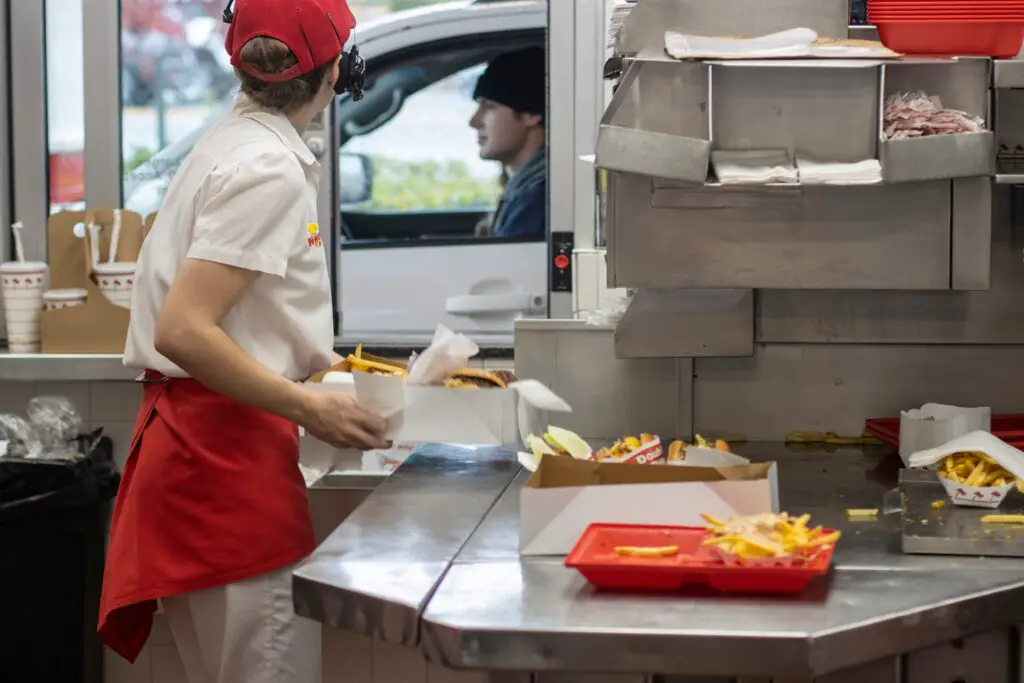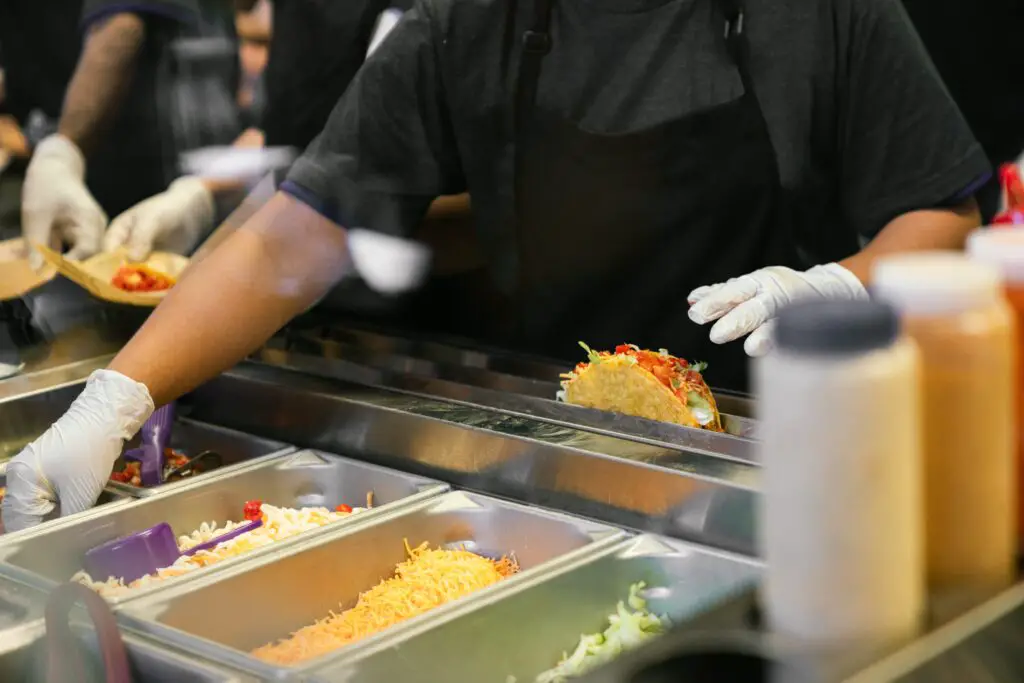1. Slacking Off During Busy Hours

In the ’70s, fast food joints were all about speed and efficiency, especially during peak hours. Workers were expected to move quickly, assembling orders without skipping a beat. If someone was caught slacking, it could mean a serious talking-to from management or, in worst-case scenarios, termination. The pressure was on to keep the line moving, and customers didn’t appreciate waiting for their Big Mac or fries.
Employees were often given specific roles, whether it was cooking, assembling, or handling the drive-thru, and each person had to stay focused. If you let your guard down, it reflected poorly on the entire team. With the rise of fast food chains like McDonald’s and Burger King in the ’70s, competition was fierce, and efficiency was everything. A slow worker could end up getting the boot.
2. Not Following Health and Safety Protocols

Fast food chains took food safety very seriously in the ’70s, even though standards were still evolving. Workers had to adhere strictly to hygiene practices, like washing hands regularly and wearing proper attire, including hairnets and gloves. If someone was caught violating these basic rules, they risked their job. This was especially true when handling meat, which had to be cooked thoroughly to avoid any health scares.
Foodborne illnesses were more common back then, and fast food chains couldn’t afford to let a worker’s carelessness jeopardize their reputation. A single mistake—like serving food without gloves or failing to sanitize cooking equipment—could result in the loss of a job. The importance of maintaining a clean and safe environment was constantly drilled into employees, and breaking those rules was a one-way ticket to unemployment.
3. Stealing Food or Money

Stealing was one of the biggest reasons fast food workers got fired in the ’70s. Whether it was grabbing an extra handful of fries or pocketing some cash from the register, theft was taken very seriously. Fast food chains back then had tight controls in place, from surveillance cameras to spot checks, to ensure employees weren’t helping themselves to the inventory.
Employees found guilty of stealing could be immediately terminated. In some cases, a simple mistake—like giving away a free meal to a friend—could get someone fired, especially if it was considered a violation of company policy. The fast food industry had a zero-tolerance policy for theft, and even small infractions could lead to a pink slip.
4. Disrespecting Customers

The customer service culture in the ’70s was much stricter than it is today. Fast food workers were expected to be polite and accommodating, with little room for bad attitudes. If you were rude to a customer, it could cost you your job. This was especially important at the time, as fast food was becoming a cultural phenomenon, and keeping customers happy was a top priority.
Workers had to maintain a friendly demeanor even when dealing with difficult customers. If an employee argued with a customer or failed to de-escalate a situation, it would reflect poorly on the company and could lead to firing. The golden rule was to always treat customers with respect, no matter how rude they were.
5. Showing Up Late or Not Showing Up at All

Punctuality was key in the fast food industry during the ’70s. With shifts scheduled tightly around meal times, workers were expected to be on time and ready to work. If you were consistently late or, worse, didn’t show up at all, you were risking your job. Fast food restaurants often ran on tight schedules, and a missing worker could cause chaos for the rest of the team.
If you couldn’t make it to your shift, it was essential to let your manager know ahead of time. No-shows were especially frowned upon and could result in immediate termination. The pressure to be punctual was immense, especially in a world where customer expectations for fast service were rising.
6. Disregarding Uniform Standards

In the ’70s, the uniform was everything at fast food chains. Employees were expected to wear their uniforms neatly and adhere to strict grooming standards. This included wearing the company-issued hats, aprons, and often, hairnets. A worker who showed up with a messy uniform or failed to follow dress code policies could be written up, and repeat offenders could be fired.
Uniform violations were considered a direct reflection of the company’s standards, so managers were strict about ensuring employees looked professional at all times. This was especially true for iconic fast food chains that wanted to maintain a clean, efficient image. Any misstep in appearance could lead to a quick dismissal.
7. Failing to Keep Up with Speed Standards

Fast food was all about speed in the ’70s, and workers were expected to follow strict time standards for completing orders. If a worker couldn’t meet the speed requirement, it was a red flag. This was particularly important in drive-thru windows, where waiting times were closely monitored. Failure to keep up with the pace could result in warnings, and too many infractions could lead to being let go.
The pressure to maintain speed was constant, and workers were often timed on how long it took to complete each task. If a team member wasn’t able to keep up with the demands, it could disrupt the flow of service and affect the entire restaurant’s performance. Fast food chains of the ’70s were all about getting food out fast, and employees were expected to meet those standards.
